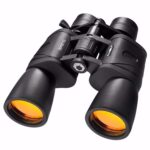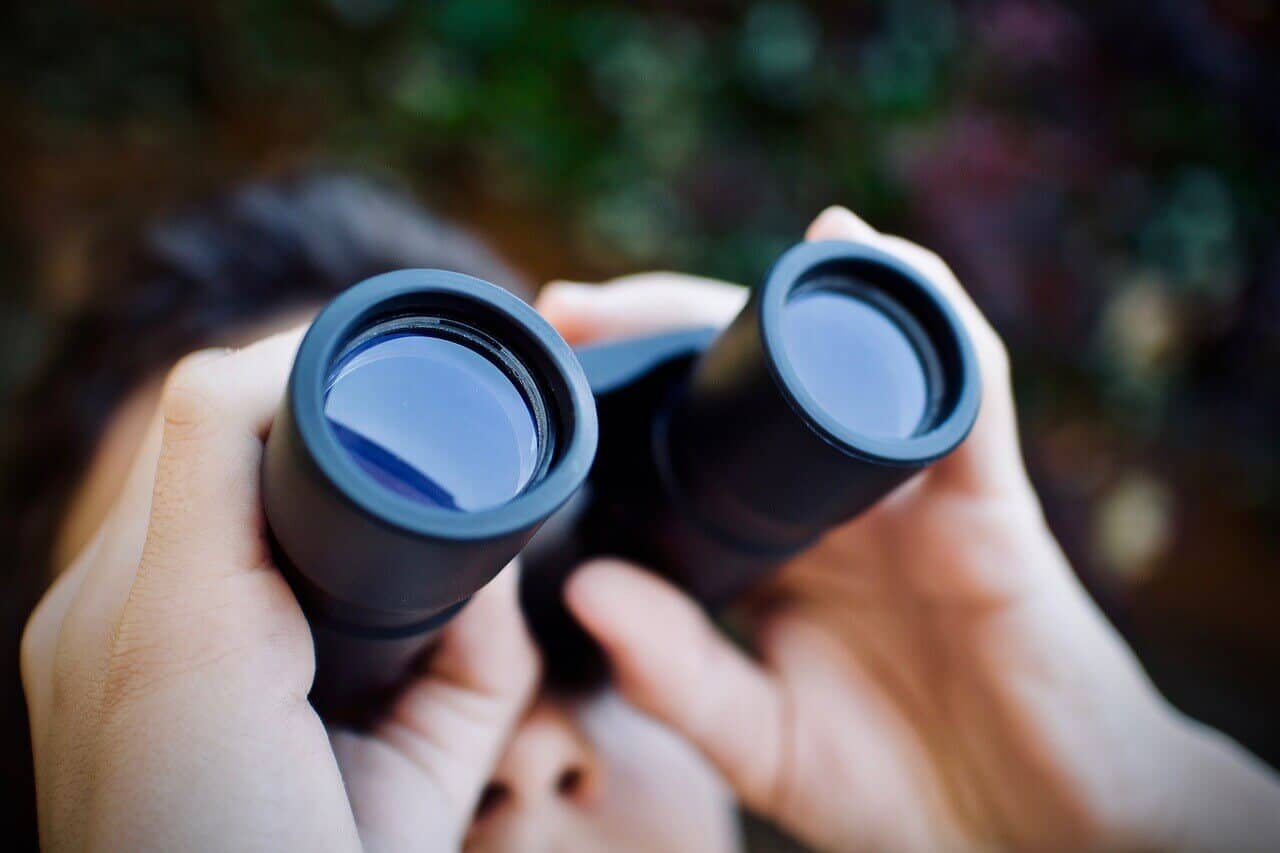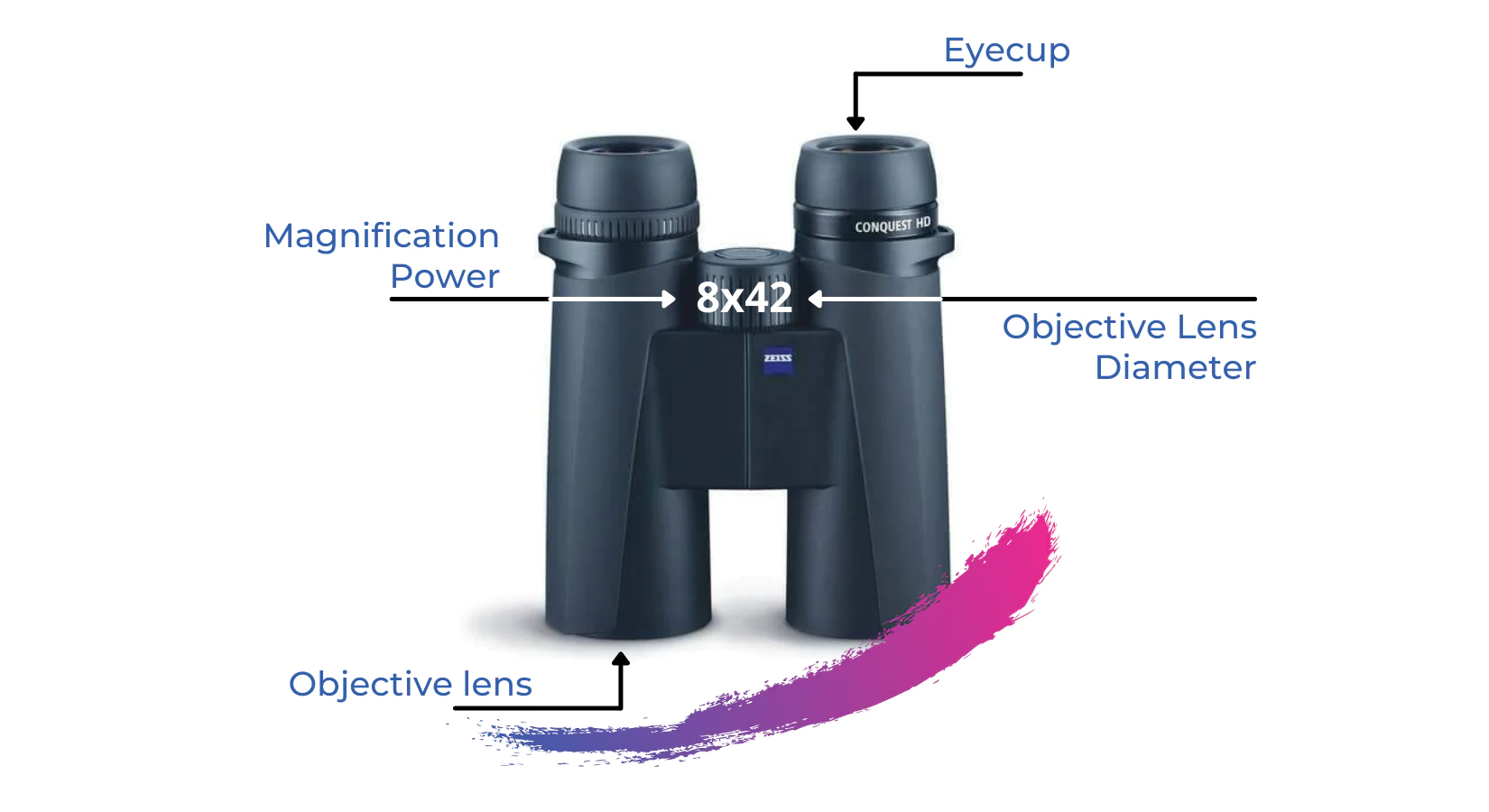Beginners and most common people don’t know what prims are and what is the functions of prisms in binoculars. A novice looking to buy his first pair of binocs can easily get confused by this term.
The quality of images created by binoculars greatly depends on prisms. Prisms are optical entities made of glass or plastic cut in different shapes and bend at an acute angle.
Today the majority of binoculars are using two types of prisms: Porro prism and Roof prism. Porro and roof prism binoculars can be easily distinguished from each other because of their shape and design.
What is the Function of Prisms in Binoculars?
Prisms serve two main functions in binoculars.
- The image generated by an objective lens is usually upside down and in some cases even backwards. Imagine a headache and eye stress what we have to suffer if our images are presented in the wrong orientation. This is where prisms come in, they flip the image right side up so we can see it comfortably.
- Take a look at vintage binoculars and you will realize that the binoculars in those days were bulky and hard to carry, the reason being that they used mirrors inside instead of prisms. Modern binoculars are more compact and user-friendly all because of prisms. Prisms fold the light path which makes binoculars smaller in size.
Difference between Mirrors & Prisms:
In past, binoculars manufacturers used mirrors instead of prisms. Using mirrors resulted in heavier binoculars because of their size and structure.
Even the quality of the image provided by such binoculars was not up to the mark. The mirror absorbs light itself and cannot transfer all the light that is received straight to the eyepiece. Loss of light leads to dim and hazy images.
Prisms on the other hands are internally reflective optical entities so their light absorption rate is very low. Prisms reflect off the lights at different angles and pass the maximum amount of light to eyepieces hence the brighter images.
There are no two opinions. Prism binoculars are far more superior then mirror binoculars.
BK 7 and BAK4 Prisms Glass

BK 7 and BAK4 are the terms commonly used by the manufacturers but it can get pretty confusing to understand what they do.
Basically, prisms are made of glass and there are different types of glass used in prisms. Bk7 and BAK4 are the two most commonly used glass in prism manufacturing.
Glass has to go through a lengthy process of grinding and polishing, to make them suitable for prism use.
BK7 Prism Glass
Bk7 is made out of borosilicate glass and is highly refractive. You will find BK7 in low-cost binoculars mostly.
Binoculars that use BK7 prism glass have exit pupil that is not perfectly round and the edges often appear to be trimmed.
Also Read: 7 simple ways to hold binoculars steady without using binoculars
BAK4 Prism Glass
BAK4 stands for bariteleichkorn in German and barium crown in English. Barium is another type of crown glass used to make prisms.
Much hyped-up BAK4 optical glass is better performing than BK7. The main difference is between the refractive rate in which BAK4 is slightly inferior to BK7.
If you look through bak4 binoculars, you will see that the shape of the exit pupil is rounder compared to BK7. And that along with better light transmission creates brighter and enhanced images than BK7 binoculars.
One downside of using BAK4 is the high cost. They are expensive compared to BK7 because of superior optical glass.
Although there is not much difference in terms of quality of the image in both the glasses unless you are using binoculars with a wider field of view.
Conclusion
We hope that after reading this guide you can now understand and also enlighten others about what is the function of prisms in binoculars.
This information will definitely help you with your future purchases too.

An optics enthusiast – I love bird watching as well as wildlife. Originally from South Africa, I moved to the UK at a young age. I love reviewing the latest binoculars as well as traveling. I work as a comms consultant during the day. My plan is to travel across the world so building up to that goal.





